IDEXX SDMA
SDMA Case Study: Reese
SDMA helps lead to the diagnosis and treatment of suspect pyelonephritis and improvement in kidney function

Background information
Name: Reese
Age: 16 years
Breed: Domestic shorthair
Gender: Female
Presenting reason and history
Reese presented for her annual wellness visit. The owners felt that Reese was doing well for a senior cat. Her appetite was good, and they had not noticed any weight loss, coughing, sneezing, vomiting, diarrhea, or change in thirst or urination.
Physical examination
Reese was bright, alert, responsive and hydrated. She was a little overweight with a body condition score (BCS) of a 6 on 9-point scale. Her temperature, pulse and respiration were within normal limits. Thoracic auscultation and abdominal palpation were normal, and the remainder of the physical examination was unremarkable.
Diagnostic plan
Complete blood count (CBC); chemistry panel, including the IDEXX SDMA Test and electrolytes; complete urinalysis; and total T4 were recommended for a senior wellness minimum database. Reese’s CBC results were within normal limits. Other findings are shown below.
Diagnostic review
Reese’s diagnostic results showed an increased SDMA* along with a normal creatinine and increased BUN. She also had inappropriate urine concentrating ability with a urine specific gravity of 1.018. In addition, Reese had an active urine sediment with >100 WBC/hpf and marked bacteriuria. Based on these findings, a urine culture and susceptibility was performed and >100,000 organisms/mL of Escherichia coli was grown that was susceptible to most antibiotics, including amoxicillin and amoxicillin/clavulanic acid.
Action plan and results
Assessment
Based on Reese’s increased SDMA with an inappropriately low urine specific gravity, it was clear that she had decreased kidney function in addition to having a urinary tract infection.
Differentials at this time included:
- Active or acute kidney injury (AKI) secondary to pyelonephritis.
- Chronic kidney disease (CKD) with a concurrent lower urinary tract infection (UTI).
- AKI from pyelonephritis superimposed on CKD, causing a worsening of existing kidney disease.
PLAN
Investigate
Additional diagnostics that should have been considered to investigate further but were not performed:
- Abdominal ultrasound to look for evidence of pyelonephritis and rule out urolithiasis.
- Blood pressure since hypertension is a common confounding factor with kidney disease.
Manage
Treatment initiated:
- Clavamox 62.5 mg by mouth twice daily for one month for possible pyelonephritis.
- Fresh clean water sources available at all times.
- Diet changed to Hill’s Prescription Diet k/d Feline and Royal Canin Veterinary Diet Renal cat formula.
Monitor
Recheck visit:
- Ideally in 2 weeks to determine response to treatment.
- However, recheck was done in 1 month to see if infection cleared and if any improvement in kidney function.
- Follow-up diagnostics revealed that the SDMA concentration had declined from 19 µg/dL to 15µg/dL, there were no WBCs or bacteria on the urine sediment, and the culture was negative.
DIAGNOSIS AND LONG-TERM MANAGEMENT
Diagnosis
- Suspect pyelonephritis based on improvement in kidney function after treatment of UTI.
- AKI from pyelonephritis superimposed on CKD.
Long-term management
- Treat for International Renal Interest Society (IRIS) stage 2 CKD, including continuing to feed a kidney therapeutic diet.1 For more information, visit idexx.ca/sdma-iris
- Recheck urine culture monthly for 3 negative consecutive months.
- Then recheck minimum database and urine culture every 3 months.
Patient reports
INITIAL RESULTS
Chemistry
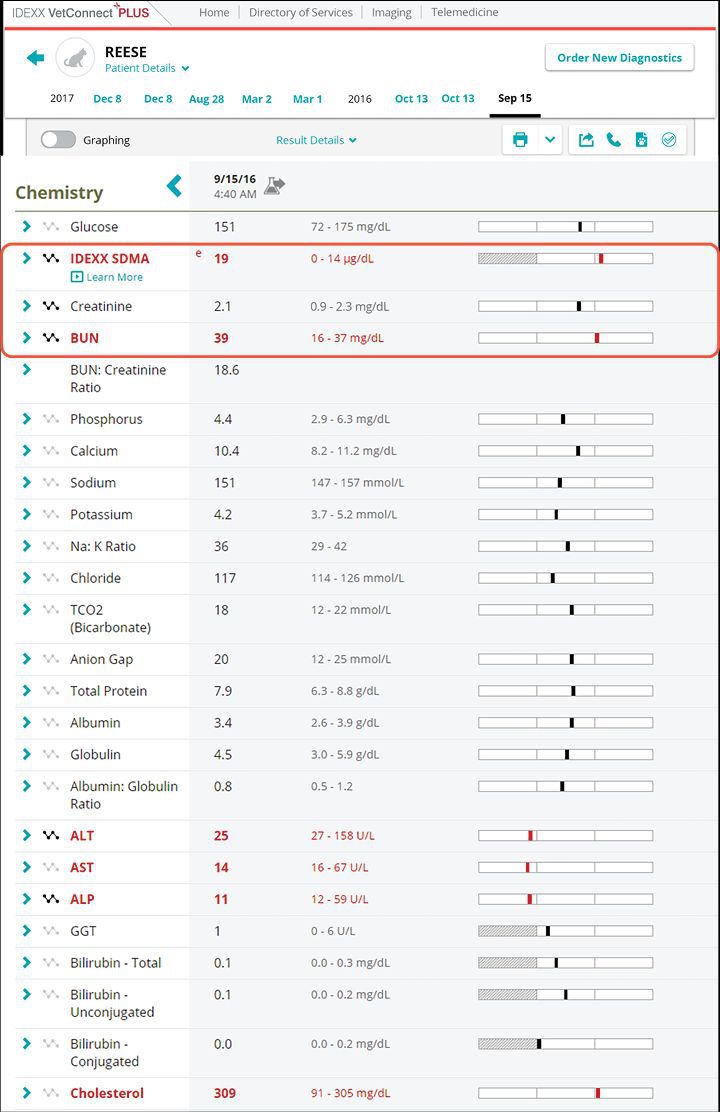
Urinalysis
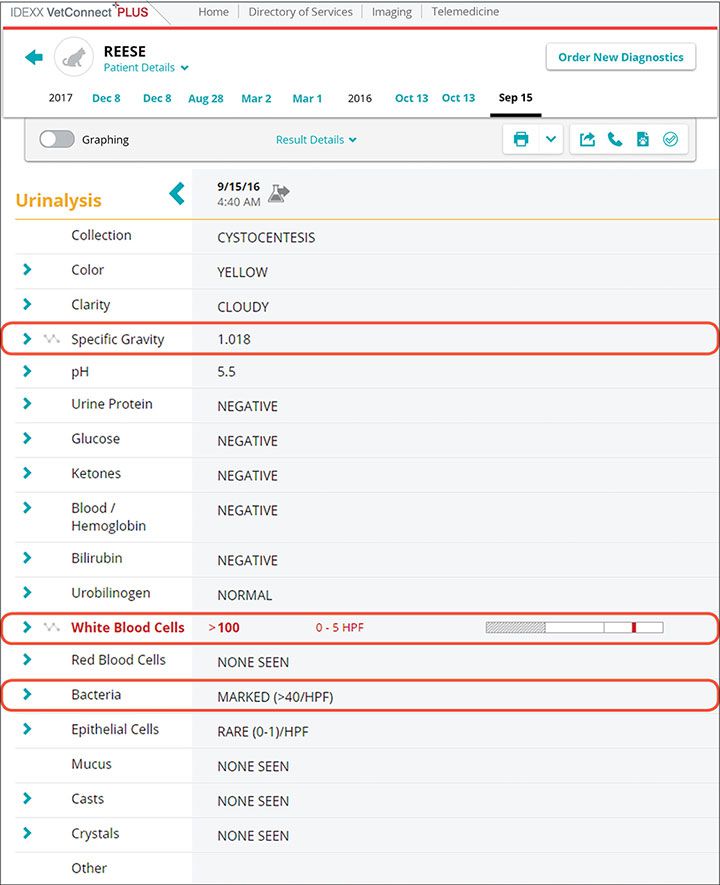
Urine culture and MIC susceptibility
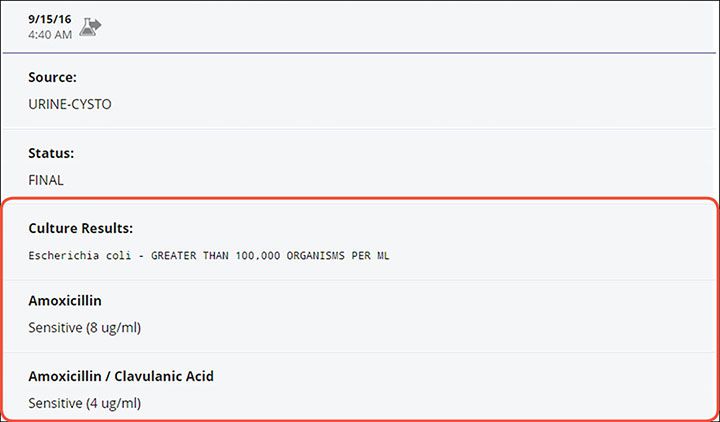
RECHECK RESULTS
Urinalysis
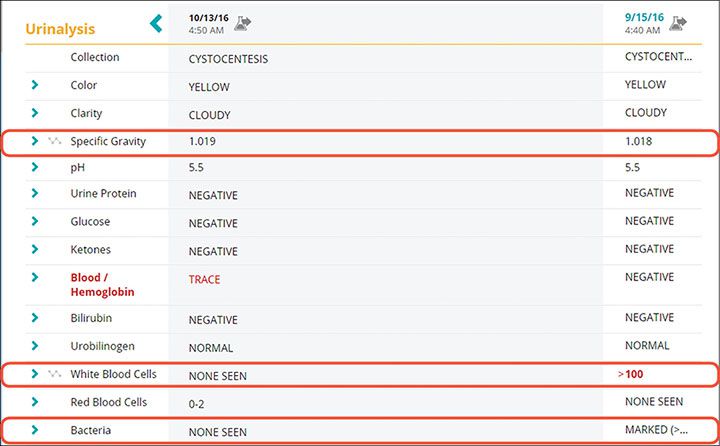
Urine culture
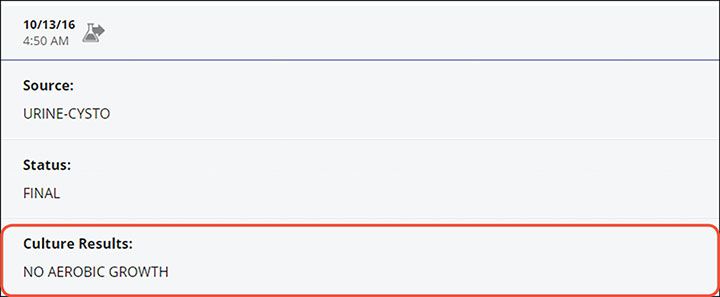
Chemistry
Discussion
- SDMA is a more reliable indicator of kidney function than creatinine in both AKI as well as CKD because it is more sensitive and increases earlier.2–4
- In pets like Reese, an increased SDMA in face of a urinary tract infection, should lead to additional investigation and a consideration for more aggressive treatment for pyelonephritis.
- Long-term management and monitoring of these pets can help prevent and detect future infections and slow progression of underlying CKD.
*Symmetric dimethylarginine.
References
- International Renal Interest Society. IRIS Guidelines. www.iris-kidney.com. Accessed 21 March 2017.
- Nabity MB, Lees GE, Boggess M, et al. Symmetric dimethylarginine assay validation, stability and evaluation as a marker for early detection of chronic kidney disease in dogs. J Vet Intern Med. 2015;29(4):1036-1044.
- Hall JA, Yerramilli M, Obare E, Yerramilli M, Jewell DE. Comparison of serum concentrations of symmetric dimethylarginine and creatinine as kidney function biomarkers in cats with chronic kidney disease. J Vet Intern Med. 2014;28(6):1676-1683.
- Hall JA, Yerramilli M, Obare E, Yerramilli M, Almes K, Jewell DE. Serum concentrations of symmetric dimethylarginine and creatinine in dogs with naturally occurring chronic kidney disease. J Vet Intern Med. 2016;30(3):794-802.